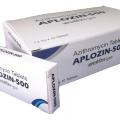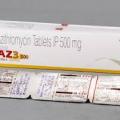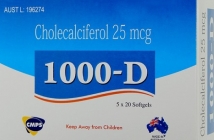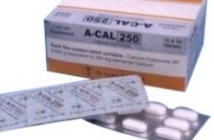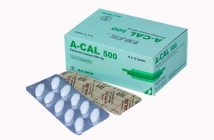Home / Categories / ANTHER-500MG

ANTHER-500MG
(10X6'S)
AZITHROMYCIN-500MG
MACROLIDES, LINCOSAMIDE AND OTHERS
SUMMY PHARMACEUTICALS P. LTD
Product Details
Drug Facts
Azithromycin
Action
Indications
Contraindications
Route/Dosage
Interactions
Lab Test Interferences
Adverse Reactions
PrecautionsPatient Care Considerations
Administration/Storage
Assessment/Interventions
Patient/Family Education
(UHZ-ith-row-MY-sin)ZithromaxTablets: 250 mg (as dihydrate)Tablets: 500 mg (as dihydrate)Tablets: 600 mg (as dihydrate)Powder for injection, lyophilized: 500 mgPowder for oral suspension: 100 mg/5 mLPowder for oral suspension: 200 mg/5 mLPowder for oral suspension: 1 g/packet (as dihydrate)Class: Antibiotic, Macrolide
 Action Interferes with microbial protein synthesis.
Action Interferes with microbial protein synthesis.
 Indications
Indications
ADULTS: Treatment of infections of the respiratory tract, chronic obstructive pulmonary disease (COPD), community-acquired pneumonia, Mycobacterium avium complex, pelvic inflammatory disease, skin and skin structure, and sexually-transmitted diseases caused by susceptible organisms.
CHILDREN: Treatment of acute otitis media caused by susceptible organisms; community-acquired pneumonia, treatment of pharyngitis/tonsillitis caused by Streptococcus pyogenes in patients who cannot use first-line therapy.
 Contraindications Hypersensitivity to azithromycin, erythromycin, or to any macrolide antibiotic.
Contraindications Hypersensitivity to azithromycin, erythromycin, or to any macrolide antibiotic.
 Route/Dosage
Route/Dosage
Acute Otitis Media
Children 6 mo and older: PO 30 mg/kg given as a single dose or 10 mg/kg once daily for 3 days or 10 mg/kg as a single dose on the first day (not to exceed 500 mg/day) followed by 5 mg/kg on days 2 through 5 (not to exceed 250 mg/day).
Bacterial Infections
Adults: PO 500 mg as single dose on first day, then 250 mg/day on days 2 through 5.
Community-Acquired Pneumonia
Adults and children 16 yr and older: PO 500 mg as a single dose on the first day followed by 250 mg once daily on days 2 through 5.
Adults: IV 500 mg as a single daily dose for greater than or equal to 2 days. Follow IV therapy by the oral route at a single daily dose of 500 mg to complete 7- to 10-day course of therapy.
Children 6 mo and older: PO 10 mg/kg as a single dose on the first day (not to exceed 500 mg/day), followed by 5 mg/kg on days 2 through 5 (not to exceed 250 mg/day).
Gonorrhea
Adults: PO Single 2 g dose.
Mild to Moderate COPD
Adults and children 16 yr and older: PO 500 mg/day for 3 days or 500 mg as a single dose on the first day followed by 250 mg once daily on days 2 through 5.
Mycobacterium Avium Complex
Adults: PO Prevention: 1.2 g taken weekly. Treatment: 600 mg/day in combination with ethambutol (15 mg/kg).
Pelvic Inflammatory Disease
Adults: IV 500 mg as a single daily dose for 1 to 2 days. Follow IV therapy by the oral route at a single daily dose of 250 mg to complete a 7-day course of therapy.
Pharyngitis/Tonsillitis
Adults and children 16 yr and older: PO 500 mg as a single dose on the first day followed by 250 mg once daily on days 2 through 5.
Children at least 2 yr: PO 12 mg/kg/day for 5 days, not to exceed 500 mg/day.
Genital Ulcer Disease caused by H. ducreyi (chancroid), Nongonococcal Urethritis/Cervicitis caused by C. trachomatis:
Adults: PO Single 1 g dose.
Uncomplicated Skin and Skin Structure Infections
Adults and children 16 yr and older: PO 500 mg as a single dose on the first day followed by 250 mg once daily for 4 days.
 Interactions
Interactions
HMG-CoA reductase inhibitors (eg, lovastatin):
Increased risk of myopathy and rhabdomyolysis.
Tacrolimus:
Increased tacrolimus plasma levels with increased risk of toxicity.
Warfarin:
The anticoagulant effect may be increased, increasing the risk of hemorrhage.
 Lab Test Interferences None well documented.
Lab Test Interferences None well documented.
 Adverse Reactions
Adverse Reactions
CARDIOVASCULAR: Palpitations; chest pain. CNS: Dizziness; headache; vertigo; somnolence; fatigue. DERMATOLOGIC: Rash; photosensitivity. GI: Diarrhea; nausea; vomiting; abdominal pain; dyspepsia; flatulence; melena. GU: Vaginitis; monilia; nephritis. HEPATIC: Cholestatic jaundice. OTHER: Angioedema; anaphylaxis.
 Precautions
Precautions
Pregnancy: Category B. Lactation: Undetermined. Cardiac effects: Serious cardiovascular events have occurred with other macrolide antibiotics, especially when given concomitantly with certain antihistamines (eg, terfenadine). Gonorrhea/Syphilis: Ineffective for treatment of these infections. Hepatic/Renal function impairment: Use cautiously. Pneumonia: Only effective for mild community-acquired pneumonia. Pseudomembranous colitis: May be factor in patients who develop diarrhea.
PATIENT CARE CONSIDERATIONS
 Administration/Storage
Administration/Storage
Oral suspension/Tablets
- Administer 1 hr before or 2 hr after meal.
- Tablets can be taken without regard to meals.
- Time doses evenly throughout day for optimal blood levels.
- Do not give antacids for greater than 2 hr after administration of product.
- Do not crush capsules.
- Give patient 6 to 8 oz of water or noncitrus juice with oral medication.
- Store reconstituted oral suspension at room temperature and use within 10 days. Discard after full dosing is completed.
- Store in tightly closed container at room temperature.
Injection
- The infusate concentration and rate of infusion for azithromycin for injection should be either 1 mg/mL over 3 hr or 2 mg/mL over 1 hr. Do not administer as a bolus or IM injection.
 Assessment/Interventions
Assessment/Interventions
- Obtain patient history, including drug history and any known allergies.
- Review C&S report as available.
- Monitor renal, liver, and GI function during therapy. Notify health care provider of any GI side effects.
- Observe for signs of superinfection during therapy (eg, yeast infections, black hairy tongue, itching in groin area).
- Monitor for bleeding in patients receiving concomitant oral anticoagulant therapy.
- Notify health care provider if signs and symptoms of anaphylaxis occur.
 Patient/Family Education
Patient/Family Education
- Instruct patient to time doses for even distribution over a 24-hr period.
- Inform patient that the medication works best on empty stomach, but may be taken with food if there is GI upset.
- Instruct patient to take medication with full glass of water or noncitrus juice.
- Encourage patient to increase fluid intake to 2000 to 3000 mL/day, if not contraindicated.
- Instruct patient to notify health care provider if rash develops or difficult breathing occurs.
- Explain that antacids should be avoided while this medication is being taken.
Books@Ovid
Copyright © 2003 Facts and Comparisons
David S. Tatro
A to Z Drug Facts
